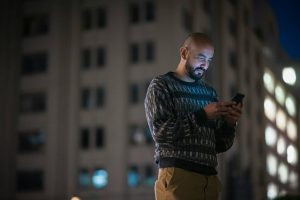As a teenager learning to drive in Los Angeles, I remember navigating with the Thomas Guide, a map book larger than most textbooks. It was unwieldy, confusing, and fun to give newcomers just to see the look on their faces. Today these books are a relic. Now most of us have advanced navigation systems that would have seemed like magic to me when I was young. I can express my desire to arrive at a particular place, choose ways to get there, and add stops along the way. But I still need to know where I want to go.
I see the synodal process as a sophisticated 21st-century GPS guiding the church into what Pope Francisco calls a “new epoch.” According to National Geographic, GPS relies on four features. First, it is a global network of satellites. One of the astounding gifts of the Catholic Church is precisely its global character. The synod benefits from this whole-Earth view.
Second, the satellites are constantly reporting where they are. Synodality is intentional about accompanying people. Just as the satellites transmit signals, the church (as the Second Vatican Council reminded us) must “scrutinize the signs of the times” to determine where we are.
Third, when we use GPS, we are accessing something like a consensus; positioning calculations require the collaboration of at least four satellites. The synod embodies a collaborative model that takes seriously difference (our locations) and unity (our joint discernment).
Fourth, GPS signals can face difficult obstacles (atmospheric disruptions, tunnels, even gravity), so the satellites must be tracked and monitored constantly, and corrections made. As a church, we are called to this same vigilance and attentiveness to barriers in order to see clearly.
As a global community, the church needs clarity about its destination. The synod synthesis report, “A Synodal Church in Mission,” identifies this as a commitment to the reign of God. This is Jesus’ destination. As he reads the scroll in the synagogue, Jesus proclaims that he has come to heal and transform the conditions of the poor, the prisoners, the sick, and the oppressed. And he emphasizes this is all happening now “in your presence” (Luke 4:18–20). As the report states, “As disciples of Jesus, we cannot shirk the responsibility of demonstrating and transmitting the love and tenderness of God to a wounded humanity.” The central characteristic of collaborating with God’s reign is living into a “profound love of God and neighbor without distinction,” as expressed by the Sisters of Saint Joseph. Yet the radical equality of God’s reign taught and lived by Jesus is missing from our world and also from our church.
Listening to the many diverse “signals” contributing to the synod makes it clear that excluding women from fully expressing their gifts in the church is an obstacle on the way to the reign of God. As the document insists, “[Jesus] let us know that the reign of God transcends us yet is not distant from us. Either we see God’s reign in the things of this world, or we will never see it.”
The presence of women in the world is incontrovertible. We are here. That this half of humanity was (and in many cases still is) judged as inferior, defective, or simply derivative of men is a tragic feature of much of the world (including many of our most influential theologians—Augustine, Aquinas, Jerome, etc.). That despite this I am writing this to you as a Latina mother and wife, who is also a Catholic theologian, is a miracle.
The GPS is clear: To live into the abundant reign of God, we need to chart a new course. If women are to be recognized as what Genesis 1:27 proclaims—created in the image of God—the church (and humanity!) needs a major course correction.
First, the church must encourage and provide “relationship and sexual education to accompany young people as they mature in their personal and sexual identities.” Education in sexuality and relationships will correct the inherited misogyny sanctioned in many cultures. Education here means asking difficult questions and discussing what contributes to the flourishing of women.
Also, around the world, women and girls are excluded from education, which is often brutally enforced. The report emphasizes that through its insistence on a radically practiced inclusion in education the church “promotes the integration and participation of the most vulnerable in church and society.” Likewise, the church is called to be an educator in “combating racism and xenophobia” in defense of migrants and refugees, who are most often women and children.
Finally, and most significantly, the report insists that if the church is to be a witness to God’s inclusive love, then access to theological education and formation for women must be “considerably expanded.” This expansion will also make it possible for women to be “integrated into seminary teaching and training programs to foster better formation for ordained ministry.”
As we build the ranks of theologically educated women, I hope our new route will take us toward restoring the diaconate of women as we reclaim its central role in ministering to the most vulnerable. We will know we are getting closer to our home in God’s reign when the full dignity of God’s image is recognized in all and by all.
This article also appears in the April 2024 issue of U.S. Catholic (Vol. 89, No. 4, pages 10-11). Click here to subscribe to the magazine.
Image: Unsplach/Brecht Danil













Add comment